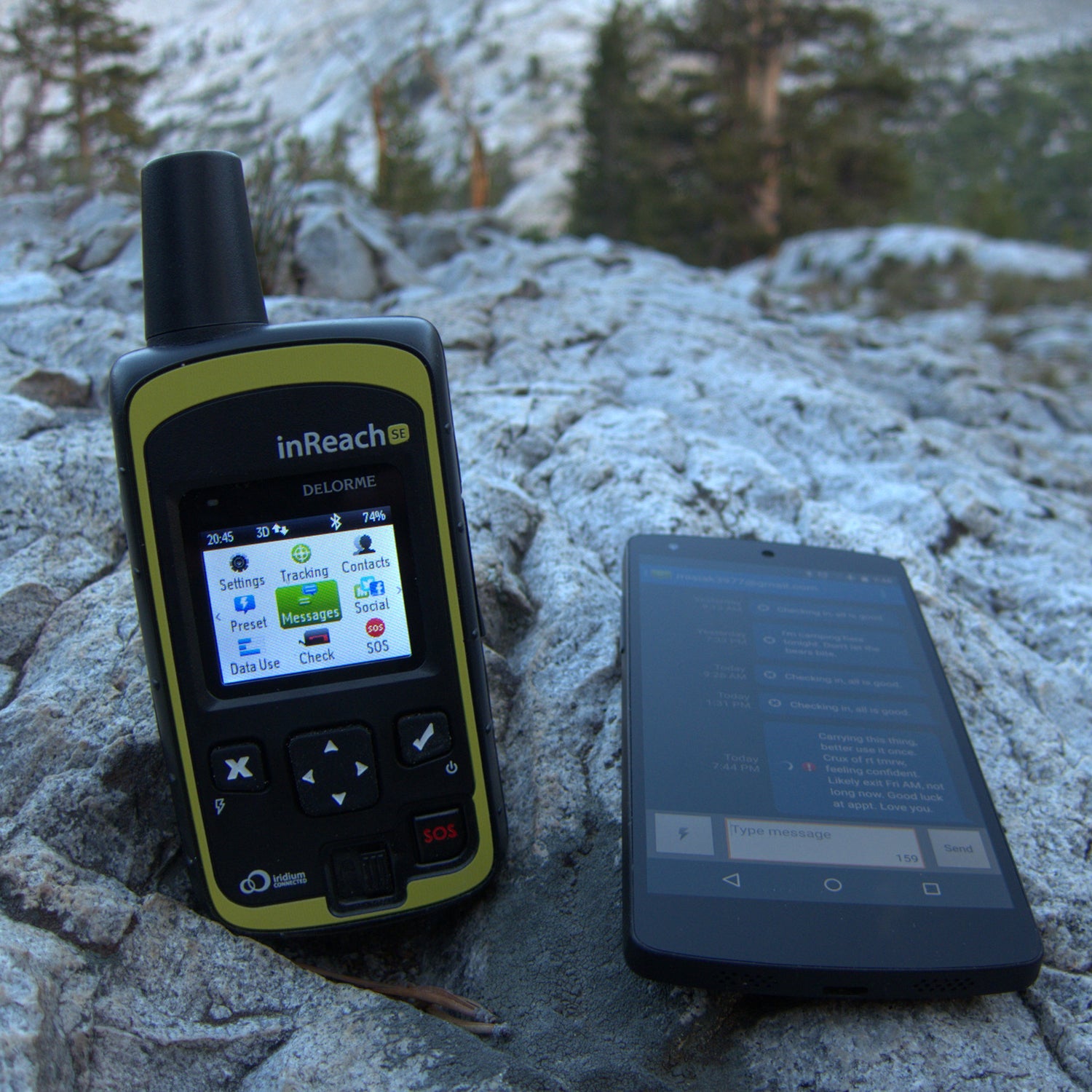Last summer, a Russian helicopter touched down next to��Nathan Shoutis and his friend,��who were on a two-and-a-half-week wilderness expedition in Kamchatka, Russia. The rescue crew inside was responding to an SOS message that had been sent from Shoutis’s DeLorme��InReach Satellite Messenger, a two-way communications device that can send SOS, help, preset, and custom messages to family, friends, and rescue teams.
The duo was fine. The SOS message had been sent accidentally, when other gear inside Shoutis’s pack put pressure on the device’s buttons. This��happened despite the fact that Shoutis had used the device’s��lock switch—a slider that’s supposed to physically block the SOS button from the internal circuitry, and thus��prevent accidental SOS initiation. To properly engage the lock switch, Garmin, which now owns DeLorme,��instructs users to “click it to lock it”��by sliding it right until there’s an audible click.
Shoutis had assumed that a random and unlikely sequence of button presses was the culprit. But during some post-trip fiddling at home in Alaska, he realized that an SOS message could be activated by applying what he characterized��as��normal pressure to the SOS button, even with the lock activated. In other words, the lock switch��was not locking, in his experience.
After��testing other friends’ InReach��units—including both the SE and Explorer models—Shoutis found this to be a recurring problem.��He contacted Garmin, which purchased DeLorme in February 2016, and he tried to alert other InReach owners of the issue with and . After that, I started my own testing to try and replicate Shoutis's finding with my unit.��
Six months ago, when I tested the lock switch on my personal InReach Explorer, I found it had��the same issue as Shoutis's. An SOS message can be activated if normal, steady, intentional pressure��is applied to the external button, as demonstrated in this video.
To observe other lock switch failures, watch and , too.
Now, I've only heard that the SOS lock switch can be an issue with DeLorme��InReach SE and InReach Explorer units, which were released in 2014 and discontinued in 2017, when��Garmin updated the line��with the��Garmin InReach SE+ and InReach Explorer+. The older��devices, though,��are still widely used.��
And needless to say, accidental SOS messages can be expensive��and even dangerous. (In Shoutis's��case, he was billed $4,400��for a “rescue.”) They also��put rescue teams at risk and possibly divert them away from true emergencies. And they can scare the shit out of family members and friends who are listed as emergency contacts.��
In a statement to ���ϳԹ���, Garmin said that��it does “not acknowledge any ‘design flaw,’��and to characterize it as such is irresponsible and untrue. We maintain that an InReach device that has been properly locked and stored will not declare an SOS without a significant amount of force being exerted on the device. This is supported by the fact that our 24/7 emergency response monitoring center does not have concerns regarding accidental emergency activations, which are very rare and easily avoidable.”��
Six months ago, as part of a , Garmin offered me this��acknowledgement about the lock-switch design:
“If a significant amount of force is put on the SOS button, the plastics of the SOS Button Lock can be deformed to cause the button cover to touch the internal SOS button. If this significant level of force is maintained for the five��second ‘press and hold’��duration needed to declare an emergency, the SOS countdown timer will trigger. We have verified this process and confirmed that the amount of force necessary to trigger the SOS is considerably greater than could be expected in a normal use case, so great that it is approaching a level that would damage the screen and display lens too.”
Based on my testing and the experiences of others I’ve talked to, more pressure is required to trigger the SOS message with the lock switch activated than with it off. That said, the pressure required does not leave��visible damage to the screen or display lens, in my experience and as I demonstrate in the video above.��It’s easy to imagine such pressure being exerted on an InReach stored inside a backpack alongside hard objects like a fuel canister, pot, or headlamp.��
If you do own an InReach SE or InReach Explorer, here are my best-practice recommendations.
- Test your SOS lock switch. With the device off, engage the lock switch—it should click audibly when it locks. Then��press the SOS button for five��to ten��seconds with normal pressure. If your lock-out switch is malfunctioning, an SOS message will initiate. You have 20 seconds to cancel it.
- Carry your InReach in such a way that pressure cannot be applied accidentally to the SOS button. For example, fix it to a shoulder strap or keep it in a container inside your pack. A reader of mine, Bob S., sent a photo of his unit stored inside a semihard blood-glucose meter case.


